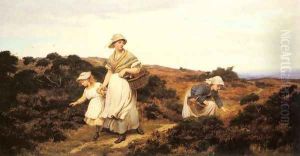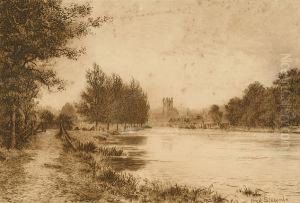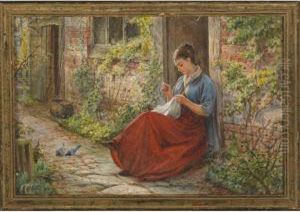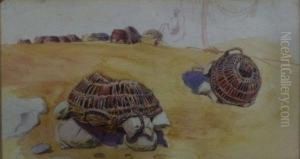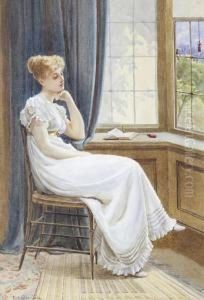Frederick Albert Slocombe Paintings
Frederick Albert Slocombe was an English artist known primarily for his landscape etchings and paintings. Born in 1847 in Greenwich, London, Slocombe grew up in a time of great innovation and change in England, which was reflected in the artistic movements of the era. He was the son of Henry Slocombe, an artist known for his landscapes and genre scenes, which undoubtedly influenced Frederick's own artistic inclinations.
Slocombe began his artistic education under his father’s tutelage before furthering his studies at the South Kensington Art School. He initially focused on painting and was recognized for his naturalistic renderings of the English countryside. Slocombe's works captured the serene beauty and pastoral scenes of rural England, reflecting the Victorian era's romanticized view of nature.
In the 1870s, Slocombe turned his talents to etching, a medium which was enjoying a revival in England at that time, partly due to the influence of the Etching Club, of which he became a member. His etchings often featured landscapes with remarkable detail and atmospheric effects, which won him considerable recognition. Slocombe's technical skill in etching was complemented by his keen observation of nature and the changing seasons, which made his works resonate with viewers.
Throughout his career, Slocombe exhibited his works widely, including at prestigious institutions such as the Royal Academy of Arts in London. He was active in various art circles and societies, which helped to establish his reputation as a significant figure in the Victorian art scene. Slocombe’s work is characterized by a quiet, contemplative quality and a mastery of light and shade, which gives his landscapes a distinctive, timeless appeal.
Frederick Albert Slocombe passed away in 1920, leaving behind a legacy of work that continues to be appreciated by art lovers and collectors. His etchings and paintings remain sought after for their technical proficiency and their evocative portrayal of the English landscape. Slocombe's contribution to the art of etching, in particular, holds an important place in the history of British printmaking.
